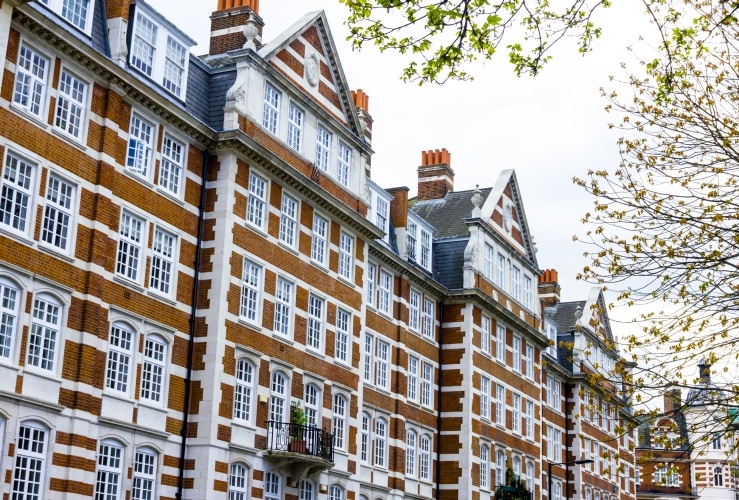
“Up not out” would enable high density mansion blocks to be built, like this one in London
Could building upwards – rather than outwards – solve the UK's continuing housing crisis? That's what one group of influential housing associations believes.
Writing to the Chancellor Philip Hammond, housing associations G15, Placeshapers, Midland Heart, Orbit, and Place for People stated: "We believe that, "build up not out" has the potential to substantially increase the supply of sites for development.
"We have the financial strength, the capability and the networks of local suppliers to be able to build greatly increased numbers of homes. Housing associations have an ambition to deliver."
The group suggested that developers should be allowed to extend the height of buildings without having to secure planning permission.
Difficulty in obtaining planning permission is one of the key reasons that Britain fails to build enough houses each year.
In 2007 the Labour Government set a target for 240,000 homes to be built each year by 2016 – a target which successive parliaments have got nowhere near. It hasn’t always been this way. In the late Sixties England alone was building more than 350,000 new homes annually; this has steadily dropped to under 150,000 in recent years.
Land availability and cost are also huge issues, with land prices having inflated "massively", according to homelessness charity Shelter. The IPPR said land prices had soared by 170% between 2000 and 2007, while house prices rose just 124% over the same period.
Another issue surrounds housebuilders who own land but delay construction – ostensibly to drip-feed new properties on to the market and keep prices high; a glut of new homes would see prices – and profits – fall.
The state's withdrawal from house building has also impacted the number of homes available; most new houses are built by the private sector and housing associations, whose combined output still falls short of the nation's requirements.
According to Sam Bowman, executive director at the Adam Smith Institute, "Building up not out" would be a "bottom-up way of making housing more affordable", providing the kind of "mansion flats and dense terraces that make up some of London's most liveable areas like Bloomsbury and Fitzrovia."
But Bowman also said the government should reclassify green belt land so that outwards development could get underway too.
The "up not out" strategy is advocated by Tory MP John Penrose, and would permit buildings to be as high as the tallest structure in a given neighbourhood, or the height of nearby trees.
Large residential tower blocks would not be part of the plan. Instead, high density mansion blocks – common on the continent – would dramatically increase population capacity in an area.
Penrose has been drumming up support among MPs for the "up not out" concept, which he submitted to communities secretary Sajid Javid's housing white paper.
Any dramatic shift in housing policy does not appear to be on the cards at present. Philip Hammond has already ruled out Javid’s contentious "borrow to build" idea, which would have taken advantage of low interest rates so that billions could be borrowed for infrastructure and housing projects.
However, the "build up not out" approach is still under consideration by Hammond. If it is supported in the Chancellor's autumn budget, councils, developers and many would-be home buyers will no doubt be delighted.




